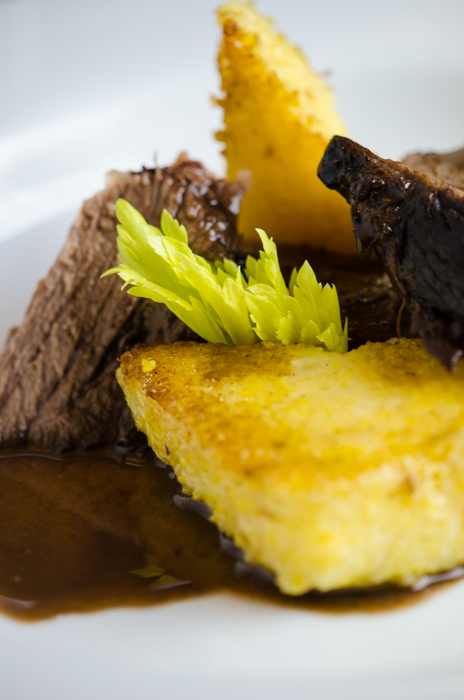 Here’s a dish we see no matter where in Italy our Italiaoutdoors private tours take us – Brasato al Brunello or Chianti in Tuscany, Brasato al Valpolicella or Amarone in the Veneto, and Brasato al Barolo in Piedmonte. A perfect dish for colder months that pairs superbly with the robust red wines that are the signature ingredient.
Here’s a dish we see no matter where in Italy our Italiaoutdoors private tours take us – Brasato al Brunello or Chianti in Tuscany, Brasato al Valpolicella or Amarone in the Veneto, and Brasato al Barolo in Piedmonte. A perfect dish for colder months that pairs superbly with the robust red wines that are the signature ingredient.
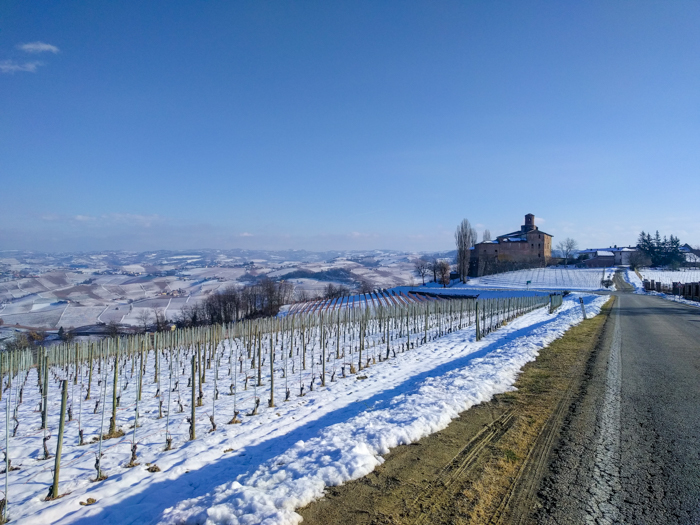
In Piedmont, there are actually two signature ingredients, the wonderful Barolo wine and meat from the local breed of cattle, the Piedmontese (Razza Bovina Piemontese). The calves are born fawn colored, and turn grey-white as they mature. Piedmontese cattle carry a unique genetic mutation that causes excessive muscle growth, or double muscling. This mutation deactivates a protein that tells the muscles to stop growing, resulting in cattle that have a higher lean-to-fat ratio, as well as less marbling with less connective tissue than meat from most other breeds of cattle. These cattle have a very distinct muscular appearance.
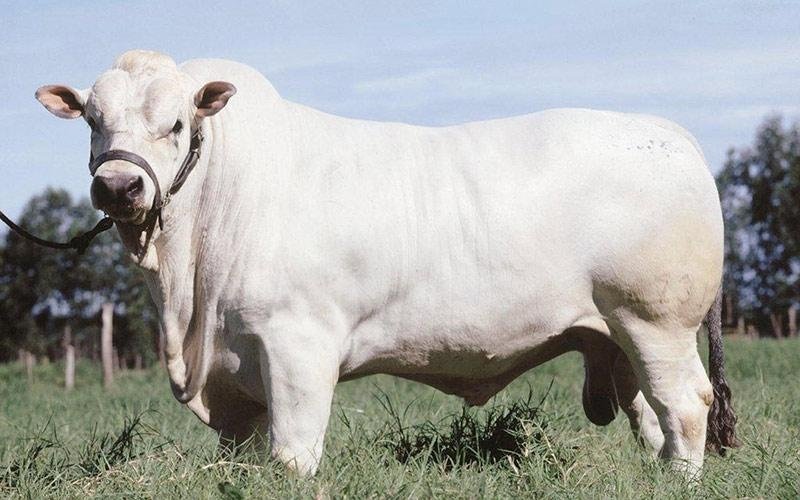
Braising is a centuries-old method of cooking that magically transforms a less desirable (= cheaper) cut of meat into a luscious dish that warms the soul on a cold night. The meat is seared, some vegetables may be added for flavor, then the meat is partially submerged in liquid and slowly simmered for hours until the meat literally falls apart.
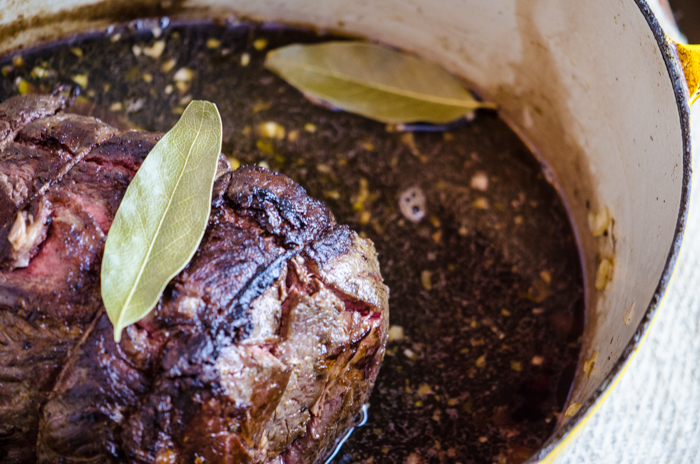
The Italian word brasato comes from brace, meaning “hot coals”, as a heavy pot containing the braise would be buried in glowing coals where the meat would cook for hours.
In his The French Laundry Cookbook, Thomas Keller says this about braising:
“When you’ve pulled your pot from the oven to regard your braise, to really see it, to smell it, you’ve connected yourself to generations and generations of people who have done the same thing for hundreds of years in exactly the same way.”
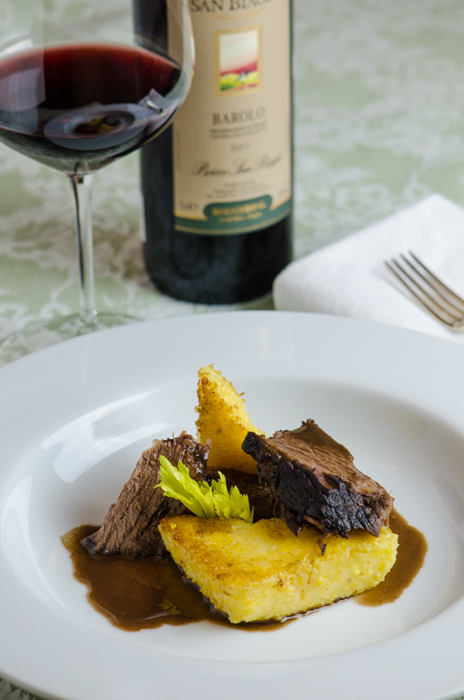 A perfect way to end a day on our Barolo walking tours, gathered around a table in an ancient trattoria, enjoying this dish with a glass of Barolo alongside the locals, like generations of Italians before you.
A perfect way to end a day on our Barolo walking tours, gathered around a table in an ancient trattoria, enjoying this dish with a glass of Barolo alongside the locals, like generations of Italians before you.
Brasato al Barolo (Beef Braised in Barolo)
Serves 6 to 8
2 tablespoons extra virgin olive oil
3 1/2 pound boneless beef roast, chuck or bottom round
Kosher salt and freshly ground pepper
2 medium onions, diced
4 medium carrots, peeled and diced
1 stalk celery, diced
2 cloves garlic, minced
2 bay leaves
Leaves of one sprig of rosemary
5 whole cloves
6 cups Barolo wine (can substitute a Nebbiolo if you are reluctant to cook with a $60 bottle of wine)
Season all sides of the roast with salt and pepper. Heat the oil in a heavy enamel pot or other ovenproof pot; place roast in the pot and brown on all sides until well caramelized all over. Remove and set aside.
Add the onions, carrots, celery and garlic, season with salt and pepper, and cook until they begin to soften, 4-5 minutes, scraping up all the browned bits from the pan as they cook. Add the bay leaves, rosemary and cloves, stir to combine. Return roast to the pan, placing it on the vegetables.
Add the wine. The wine will come up the sides of the roast so that the roast is half submerged.
Raise the heat to high, when the wine begins to bubble, lower to a simmer and cover. Cook over low heat, turning the meat occassionally, until the meat is very tender, falling apart when you pull it with a fork, and the wine is reduced – this may take 2 1/2 – 3 hours.Turn the roast over halfway through.
Carefully remove the meat to a platter and keep warm. Bring the wine and vegetables back to a boil and continue to reduce until it thickens enough to coat the back of a spoon. Taste and adjust the seasoning with salt and pepper if necessary.
To serve, slice the meat crosswise and arrange slices overlapping and fanned-out on the serving plates. Spoon some of the sauce over each serving.
On a recent trip to Piedmont, I enjoyed this dish with pureed celery root and grilled polenta.
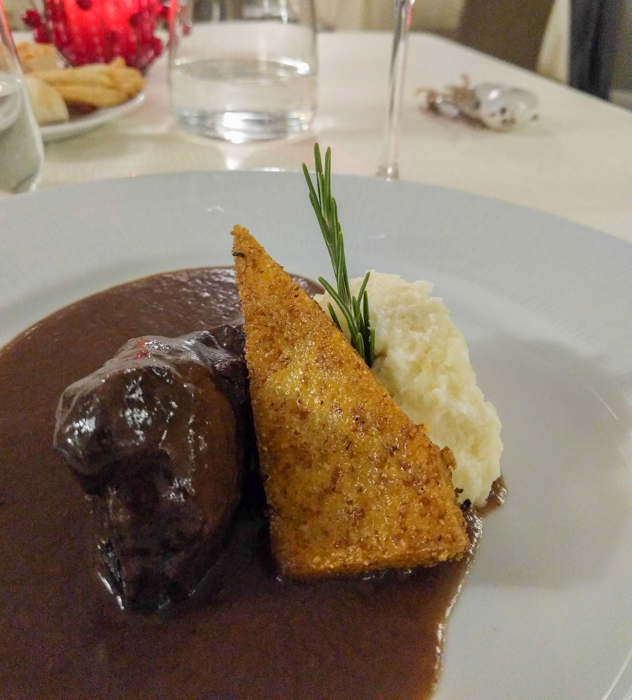

Pingback: Homemade Pasta with Pea Sauce with Allegrini | Italian Food, Wine, and Travel
Pingback: Homemade Pasta with Pea Sauce with Allegrini – Lajawab Recipes